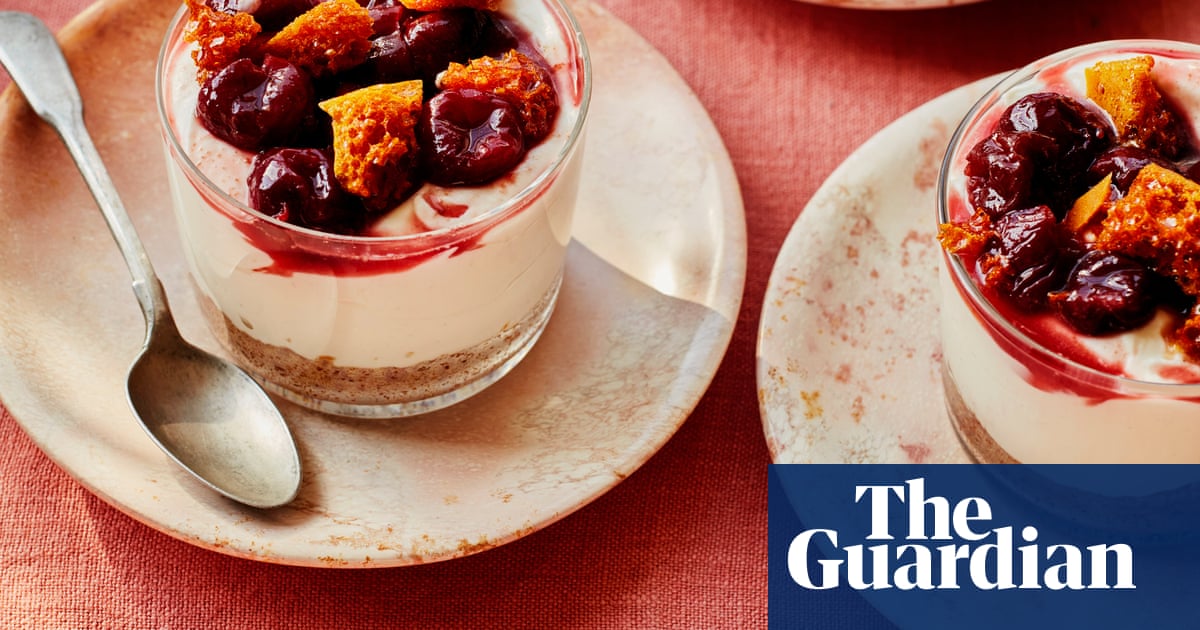Honeycomb gets lots of attention in the autumn months, but this crunchy brittle is such fun to make all year round, and adds a playful texture to all sorts of desserts such as today’s cheesecake pots. The quantities make more honeycomb than you need here, but extra snacking is inevitable. The cheesecake itself, which I’ve lightened with greek yoghurt, is super-simple to put together – just mix and chill.
Prep5 minCool1 hrCook30 minMakes6
For the honeycomb200g caster sugar200g golden syrup2½ tsp bicarbonate of soda
For the cherries255g pitted cherries,fresh or frozen and defrosted30g caster sugarSqueeze of lemon juice
For the cheesecake150g digestive biscuits50g saltedbutter, melted330g greek yoghurt250g cream cheese1 tsp vanilla bean paste50g icing sugar100ml double cream
Line a 20cm square cake tin with greaseproof paper. Put the sugar and golden syrup in a deep saucepan and heat gently until the sugar melts. Turn up the heat, let the mixture come to a boil, and heat to 150C on a sugar thermometer.
Take off the heat, tip in the bicarb, then stir quickly and thoroughly with a rubber spatula or whisk until well incorporated (be very careful, because the boiling-hot mixture will bubble up). Carefully pour the hot honeycomb into the lined tin, leave it to sit for an hour or so to firm up, then break into rough chunks.
Put the cherries, sugar and lemon juice in a small saucepan, heat gently until it comes to a boil, then turn down to a simmer and cook for three to five minutes, until the mix turns syrupy. Take off the heat and leave to cool completely.
To make the cheesecakes, blitz the biscuits and a quarter of the honeycomb in a food processor, then stir in themelted butter. Divide the mixture evenly between six ramekins, lightly press it down, then chill in the fridge while you make the filling.
Whisk the yoghurt, cream cheese, vanilla and icing sugar in a bowl until smooth. In a second bowl, lightly whip the double cream to soft peaks. Fold this into the yoghurt mixture, then spoon on top of the biscuit base in the ramekins.
To serve, top with some cherries, decorate with more honeycomb shards (they’ll start to soften over time) and take to the table immediately.
